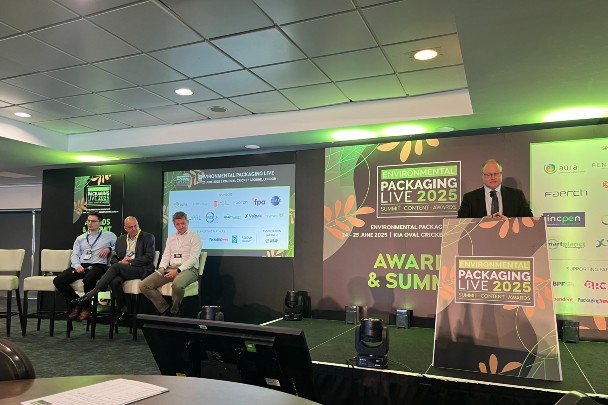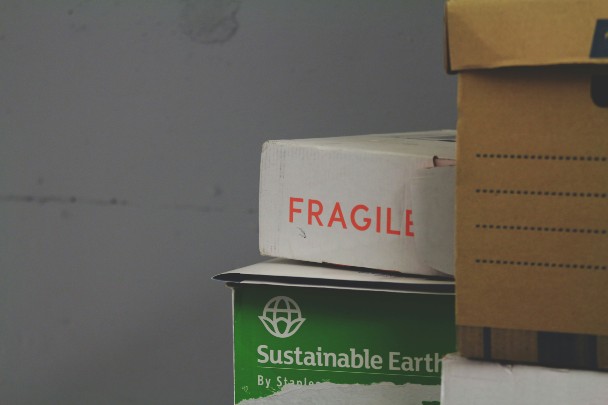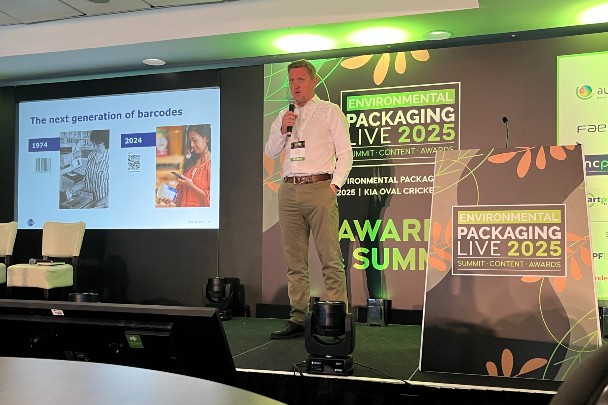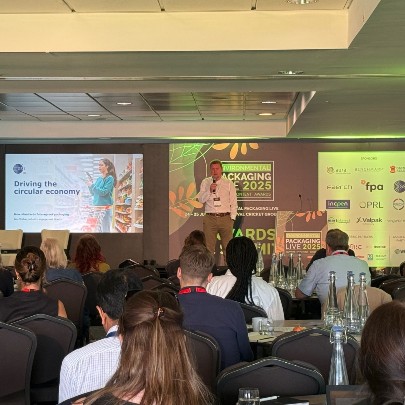July 09, 2025 Industry news
Packaging lies at the heart of global supply chains yet remains one of the most significant sources of environmental impact. In the UK alone, around 12.7 million tonnes of packaging waste were generated in 2023, with just under 65 per cent being recycled. Globally, plastic packaging is estimated to account for over one third of all plastic production and contributes approximately 1.8 billion tonnes of carbon emissions each year. This level of waste, pollution and carbon calls for urgent transformation across the entire supply chain. From material suppliers and packaging designers to logistics providers, retailers and regulators, progress towards net zero will demand more than innovative materials or clever designs. It requires reliable and verifiable data that connects every stage, enables collaboration and ensures transparency at scale.
That was the core theme of a lively panel discussion at Packaging News’ Environmental Packaging Live 2025, a key gathering for industry leaders driving innovation in sustainable materials, systems and supply chains. The session brought together voices from across the sector to explore the future of packaging and the role of collaboration in tackling carbon emissions. Speakers included Iain Walker, director of industry engagement at GS1 UK, Tim Barbary, director at Benchmark Consulting, and Liam Bland, marketing manager at Castle Industrial.
The next generation of barcodes: a new era of transparency
For GS1 UK, one of the biggest opportunities lies in the transition from traditional barcodes to QR codes powered by GS1, which unlock far more potential for information sharing throughout the supply chain and directly with consumers.

Liam, Tim and Iain (L to R) at Packaging News’ Environmental Packaging Live 2025
“The barcode has been around since 1974. It’s been incredibly powerful, but it’s time to move on,” said Iain Walker. “QR codes can carry more data, they can connect to trusted digital sources and they allow consumers to access information that simply doesn’t fit on a physical pack. The opportunity here isn’t just technical, it’s systemic. It’s about enabling every actor in the chain to contribute and benefit.”
Iain pointed out that consumers increasingly expect to know not just what is in the products they buy, but where those products came from and what to do with them after use. “We’ve seen examples in Wales where QR codes on milk cartons guide people to the correct recycling bin for their area. It’s a simple intervention, but it removes confusion and drives behavioural change.”
He noted that businesses also face a growing array of sustainability regulations and reporting requirements, from extended producer responsibility to the EU Green Deal.
“Supply chains are global, but regulations are fragmented. Organisations are often being asked for the same information in different formats, multiple times over. The move to QR codes offers a way to standardise data and avoid duplication, while also preparing for innovations like Digital Product Passports.”
The economics of sustainability
While the panel agreed on the importance of data and digital solutions, Tim Barbary emphasised that for many businesses cost is still the primary driver of decision-making.
“Shareholders and investors want to know the businesses they support are aligned with ESG values, and that includes sustainability. But within organisations there is constant pressure to reduce costs,” Tim said. “Cost is not just about the price of materials. It is also about efficiency and waste. Every time a machine is started, there is set-up waste, which adds both cost and carbon. If you can optimise production runs and reduce that waste, you save money and you help the planet.”
Tim noted that access to trusted information will be essential for businesses looking to balance performance, cost and environmental impact. Drawing a parallel with nutrition labelling, he suggested that clear and reliable information on packaging could empower both consumers and businesses to make better choices.
“We need a simple and standardised way of sharing environmental data so that businesses can verify their claims and consumers know they can trust what they are being told,” he said. “The potential for technologies like QR codes to link to independently verified information is significant. That is how we build confidence and drive meaningful change across the supply chain.”
Trust, transparency and avoiding greenwash
Liam Bland brought the perspective of a packaging distributor specialising in transport packaging, highlighting the importance of transparency in addressing sustainability challenges.

“One of the biggest issues in our industry is the lack of visibility around where materials are sourced,” Liam explained. “With products such as stretch films we are seeing an influx of cheaper alternatives but without robust verification systems it becomes almost impossible to prove recycled content claims. This undermines trust and makes it harder for responsible businesses to stand out.”
He emphasised that businesses not only need to know their own supply chains thoroughly but must also be able to show that knowledge clearly to their customers. “Increasingly, end users may not ask for the data themselves, but they want to know we understand it and can prove we are doing the right thing. That ability to evidence sustainability is fast becoming a licence to operate.”
Consumers want to do the right thing, but businesses must lead
The panel explored the role of consumers in driving change. While there is clear evidence that younger generations are willing to pay more for sustainable products, there is also a gap between intention and behaviour.
“Millions have been spent on focus groups where consumers say they’ll pay more for greener packaging, but when you stand outside a supermarket and watch what they buy, they usually choose the cheapest option,” Tim said. “We in the packaging industry have to do the work to embed sustainability at low cost, so retailers and brands can build trust with consumers.”
Iain argued that businesses should not expect consumers to shoulder the burden alone. “Complexity is our enemy here. The harder it is for people to understand what to do, the less likely they are to do it. We need to make sustainable choices easy and intuitive, and that requires businesses to collaborate and align behind common standards.”
The road ahead
As the discussion drew to a close, the panel reflected on the need for a joined-up approach to tackling carbon emissions in supply chains.

Iain Walker addresses the audience
“There will be a carbon tax. There has to be,” said Tim. “The planet is warming and as long as people are debating how to measure paper versus plastic, nothing changes. Taxes create behaviours because they make us act.”
Iain called for pragmatism and collaboration. “Regulations can be blunt instruments. Industry has an opportunity to come together and show leadership, rather than waiting for governments to dictate answers. We’ve seen positive examples already of data being used to reduce food waste, optimise transport and empower consumers. The opportunity is there if we choose to seize it.”
That opportunity lies in enabling trusted, standardised data to flow seamlessly across supply chains. As Iain concluded: “It’s not about barcodes or QR codes for their own sake. It’s about helping businesses and consumers make informed decisions that benefit them and the planet.”



